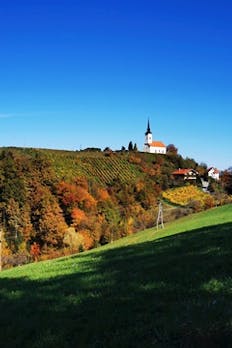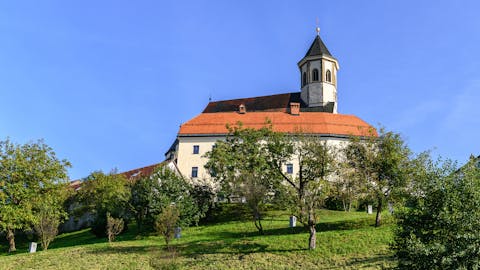
Churches and sacred objects
I. Mithraeum – sanctuaries of the god Mithras
During the Roman Empire, Ptuj (known as Poetovio) was an important and powerful city as well as a military stronghold. Soldiers from the eastern provinces brought with them Mithraism, a Persian faith with mysterious rites attended exclusively by men. In antiquity, Ptuj ranked among the largest centers of Mithraism in Europe, and as many as five remarkable sanctuaries of the god Mithras have been discovered here. At the sites of the first and third Mithraeum, Roman sanctuaries from the 2nd and 3rd centuries, visitors can still admire the preserved foundations, altars, reliefs, and cult images connected with Mithraism.
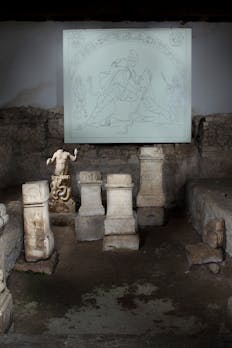

Church of St. George, Ptuj
The 12th-century church displays a rich blend of styles, dominated by Gothic and Baroque. It boasts one of the most beautiful church interiors, featuring the remarkable winged altar by Laib, 15th-century choir stalls, and an important wooden Gothic statue of its patron, St. George, dating back to the 14th century.
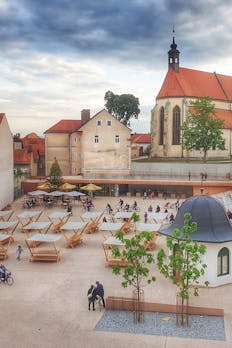

Dominican Monastery Ptuj
The Dominican Monastery was founded in 1230 by Matilda, the widow of Frederick III of Ptuj. The monastic complex still preserves its medieval character and fascinates visitors with a magnificent Gothic cloister, a splendid Baroque refectory, and rich stucco decoration. Today, it serves as a venue for cultural events, exhibitions, and business meetings, while also being open to the public for tours.
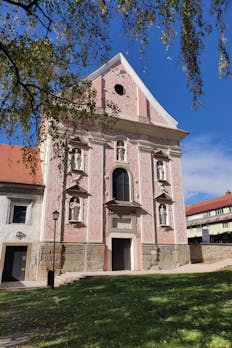

Cathedral Church Maribor
One of the central landmarks of Slomšek Square in Maribor is the Cathedral of St. Janez Krstnik. Originally built in the 12th century in the Romanesque style, this long-standing religious center of the city has in recent years become best known for Bishop Anton Martin Slomšek, the first Slovenian saint, whose tomb is located inside the church. The cathedral also serves as the seat of the Archdiocese of Maribor.
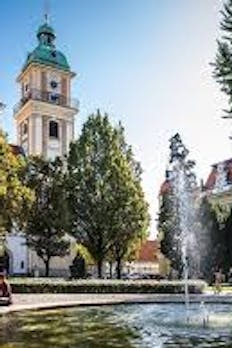

Ptuj Minorite Monastery with an extraordinary library
Founded in the mid-13th century, the monastery has been continuously inhabited by the Minorites for almost 800 years. It boasts an extraordinary monastic library with more than 5,000 volumes, including works dating back to the 16th century. Its arcaded courtyard is among the most popular venues for events in the wider region during the summer months.
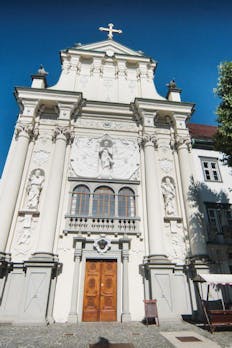

Basilica of Marije Zavetnice on Ptujska Gora
Ptujska Gora is a clustered settlement along the Ptuj–Majšperk road, with its center formed around the square and the magnificent Gothic church from 1410, situated on a 352-meter-high hill and visible from afar. It is considered one of the most beautiful Gothic churches in Slovenia, attracting numerous pilgrims, tourists, and casual visitors.
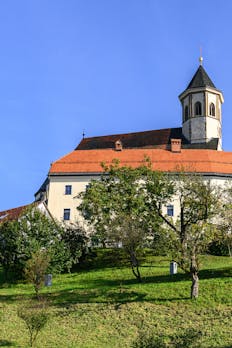

Church of St. Trije Kralji
The Pilgrimage Church of St. Trije Kralji in the Slovenske Gorice Hills is an important cultural and historical monument. Its construction began in the first half of the 16th century, making it one of the finest examples of Late Gothic architecture.
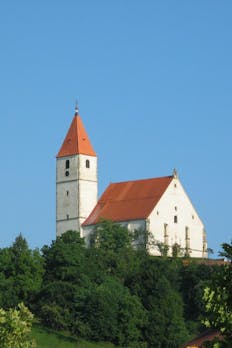

Church of St. Bolfenk
On Pohorje, surrounded by the green forests of the mountain, stands a charming little church. In its immediate vicinity once ran a prehistoric route along the ridge, evidenced by burial mounds, the Poštela earthworks, the Pohorje foundry, and other archaeological remains all the way to St. Areh. The present church was built in 1501 on the site where a smaller chapel had most likely stood before. The first written records of construction at this location date back to 1291. The church was erected by Wolfgang Herzenskraft of Limbuš in the characteristic German Late Gothic style of the time.
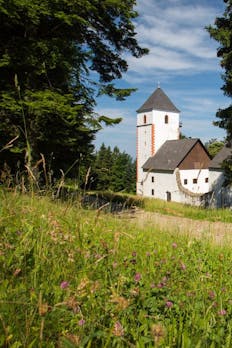

Church of St. Lenart
The church stands at the highest point in Lenart, giving the town its distinctive character. It is a unified Late Gothic building with Romanesque foundations, dating from the period between 1515 and 1518. The town itself was named after the church.


Church of St. Jurij, Spodnje Hoče
This Romanesque-Gothic parish church is the centerpiece around which the old core of Spodnje Hoče developed. It is renowned for its crypt, consisting of two vaulted underground chambers. The nave reveals Romanesque, Early Gothic, and Baroque architectural phases, while the presbytery and bell tower were constructed in the 15th century. On the church grounds, the remains of a Roman villa and several Roman stones have also been discovered.


Jeruzalem Church
The Church of Our Lady of Sorrows, dating back to the 17th century, is a former Crusader chapel that was rebuilt in several phases into a Baroque church. Jeruzalem was donated to the Crusaders by Frederick of Ptuj, and the settlement preserved its pilgrimage tradition for centuries. The main altar holds an image of Mary, said to have been brought here by the Crusaders from the Holy Land, which gave the place its name – Jeruzalem.


Church of Saint Trojica
On a hill surrounded by greenery and trees rises the Church of Saint Trojica, after which the settlement was named. With its three towers proudly reaching toward the sky, it greets locals from afar and invites weary travelers to visit. In 1631, a wooden chapel was first built here, but as word spread of the three mysterious lights that appeared to people, the decision was made to build a church instead.


Church of St. Barbara in Korena
The Parish Church of St. Barbara stands on the site of an earlier church dating back to 1560. The present church was built in 1789, and in 1867 it was renovated with a new vaulted ceiling and refurbished furnishings.
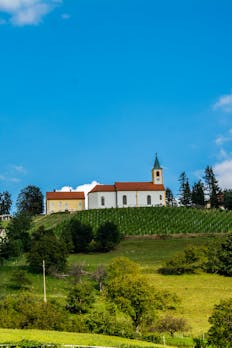

Church of St. Barbara on Kalvarija
At the top stands the Church of St. Barbara, built in the second half of the 17th century by the people of Maribor in gratitude for being spared from the plague. Near the church, visitors can enjoy a wonderful view of Maribor and the surrounding area. Calvary Hill is also home to a Way of the Cross, from which the hill takes its name.


Franciscan Church
As you stroll through Maribor’s old town, you simply cannot miss the ‘reddish’ Franciscan Church with its adjoining monastery.
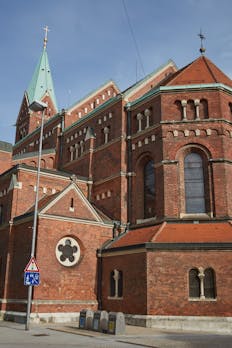

Church of St. Urban
St. Urban is a popular viewpoint offering a stunning panorama of Maribor, Pohorje, and the surrounding wine-growing and forested landscape. At the top, visitors can take a rest and enjoy local specialties at the nearby tourist farms.
